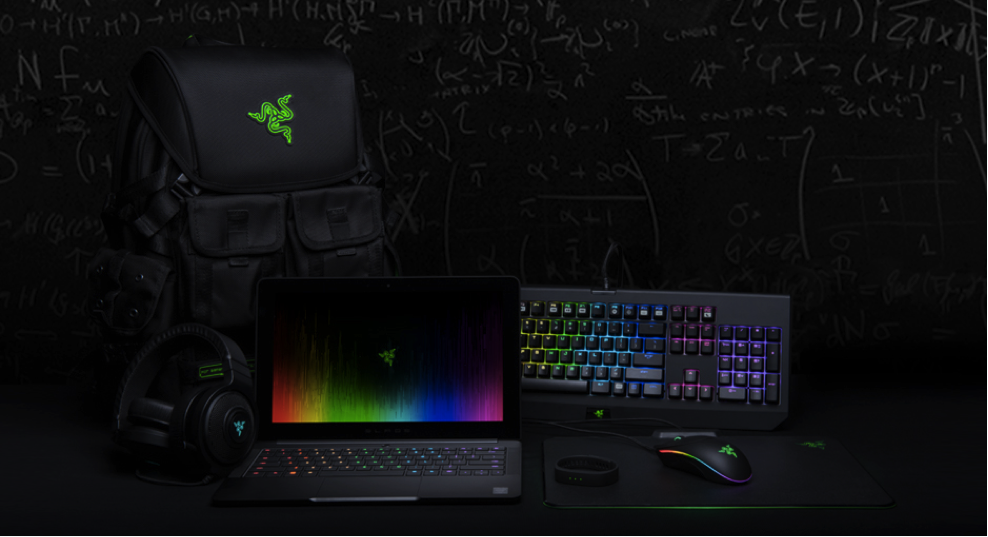
Whether you’re big into PC gaming or just have a gamer in your family always asking for expensive gear, you’ve probably heard of the brand name Razer.
Established only 11 years ago in 2005, Razer Incorporated has become a household name in high-end gaming hardware and competitive esports alike.
Much like you can’t spend 10 minutes at a Starbucks without seeing an Apple logo pop up on someone’s iPad, iPhone, or Macbook, you can’t turn your head at an esports event (or even just a LAN party) without seeing the Razer logo somewhere. Razer’s cultivation of it’s brand as the go-to gaming equipment provider is due in part to their continued involvement in the community and competitive gaming scene, but even more due to the fact that they just make really good gear. And while it is certainly more costly than your standard logitech peripherals, Razer’s price markups are much more akin to other hardware brands like DeWalt, which charge a premium for their quality, and not like Beats by Dre, which charge a premium for their quality and then an additional 10 times that for the brand name.
Probably their most expanded line, Razer offers about nine different versions of their mice. Although one of the most expensive and best-selling, the Razer Mamba is frequently less well-reviewed than the long-time standard Death Adder, which consistently gets wonderful (and very detailed) reviews. This wired mouse is renowned for it’s reasonable price point being well under a $100 for years now, and just having a simple, comfortable design. Competitive gamers also have a well-known bias against wireless devices when a delay of milliseconds can sometimes seem to determine winner or loser.
Boasting keyboards with keys that are the “world’s first mechanical switch designed for gaming,” Razer keys have long avoided that awkward feeling only gamers and frequent typists notice: on most keyboards, when you press a key on the edge, it presses down unevenly. Some tech commenters have pointed to Apple’s almost non-stop boasting of their new butterfly switches on keys for their newest line of Macbooks. In this parallel of what Razer has already dealt with, Apple implied they were solving a problem that didn’t exist. Gamers, however, have long known this struggle.
The highest-end versions of Razer’s gaming keyboards now come in the traditional mechanical IBM-style, however for fans of island keys, a flattery board, and keystrokes that aren’t so loud they wake your spouse or roommate, Razer also now sells the Deathstalker family of keyboards which still feature the same fast response, crisp key-pressing, and pretty, shiny “Chroma” lights.
And of course, still the ultimate standard in competitive gaming, intimidating those who type with less than 90 WPM and who have an equally puny APM, The Black Widow is what made Razer the company it is today and will probably remain the standard for years to come. The love and popularity surrounding this keyboard has been said to be “completely justified.”
For more macro-oriented (as in, pre-programmed macros) gamers, they also now sell the Razer Anansi Gaming Keyboard.
On the holiday list of every optimistic hardcore PC gamer this year is the jaw-droppingly perfect Razer Blade gaming laptop. Razer has only somewhat recently decided to move from a peripherals company to one designing the actual rigs gamers would use. Razer announced their first gaming laptop in 2011 at PAX, a risky move, as many tech commentators noted at the time. High-end gaming takes a toll on any machine, let alone one that needed to be up to the standards of the world champions of different high-APM games. But the wait turned out to be worth it and the naysayers were wrong. A non-computer company like Razer actually achieved surprisingly positive reviews in both performance and form factor to rival the equally-expensive Macbook marketplace—one which is slowly (emphasis on slowly) starting to cater more to PC gamers with access to staple online games like World of Warcraft, Starcraft, League of Legends, and DoTA, to name just a few.
Razer now offers three different versions of their gaming laptop, each still costing you around a cool thousand dollars minimum. But more intriguing than their expanding line of laptops is their newest product expected to finally be available for purchase in 2016: the Razer Core. Advertised on their website as “Ultrabook meets Desktop,” Razer is attempting to recreate precisely this experience. Razer’s “ultrabook” Razer Blade laptops are meant to be powerful, responsive gaming laptops in their own right, but now with external attachment to a graphics and performance boosting core, on-the-go gamers can have their cake and eat it too. And good God don’t we all want to eat that cake.
Not satisfied with merely being the industry standard in competitive gaming gear, Razer is also doing it’s best to become the industry standard in competitive gaming, period. From their expansion into headphones, actual gaming rigs, and millions and millions in advertisements and sponsorships, Razer now actually participates in esports by having their own team.
Team Razer is made up of over 300 pro gamers spread out across 34 different countries. They are in no way a half-measure, but a fully active, formidable team. In 2015, the team as a whole won around $4 million, which is competitive with some of the highest paid esports teams out there. And Razer isn’t just doing this for coverage, or to have their logo show up everywhere (it already does). Their goal is to “provide a productive, professional and passionate environment” for esports players. There’s even a documentary about it called Team Razer: Great Games.